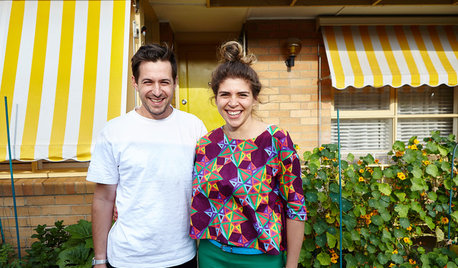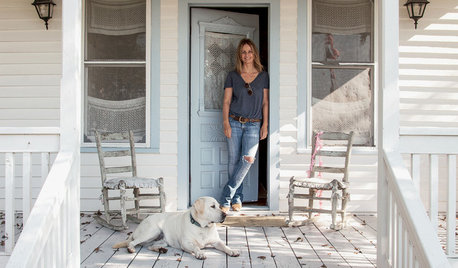Three queens in one hive
Ersten
18 years ago
Related Stories

HOMES AROUND THE WORLDMy Houzz: A DIY Queen’s Sweet Suburban Dream
A resourceful Australian homeowner shares her tips and tricks for a colorful and creative living space
Full Story
HOUZZ TOURSHouzz Tour: Lovingly Resurrecting a Historic Queen Anne
Dedication and a keen eye turn a neglected eyesore into the jewel of its Atlanta neighborhood
Full Story
ARCHITECTURERoots of Style: Queen Anne Homes Present Regal Details
Complex facades with bay windows, multiple shingle patterns and even towers make these Victorian-era homes a sight to behold
Full Story
TASTEMAKERSCatching Up With the Queen of Shabby Chic
Rachel Ashwell defined a style embraced by countless fans over the past 25 years. Find out what she’s turning her sights to now
Full Story
HOUZZ TOURSMy Houzz: Honoring the Past in an 1891 Queen Anne
Antiques and respectful renovations give a home in Oregon old-world charm and modern-day comforts
Full Story
GARDENING GUIDESGreat Design Plant: Yellow Bells, a Screening Queen
With its large size and copious golden flowers, this shrub can cover walls or screen unsightly views with ease
Full Story
KITCHEN DESIGN12 Great Kitchen Styles — Which One’s for You?
Sometimes you can be surprised by the kitchen style that really calls to you. The proof is in the pictures
Full Story
REMODELING GUIDESOne Guy Found a $175,000 Comic in His Wall. What Has Your Home Hidden?
Have you found a treasure, large or small, when remodeling your house? We want to see it!
Full Story
KITCHEN DESIGNKitchen Recipes: Secret Ingredients of 5 One-of-a-Kind Cooking Spaces
Learn what went into these cooks’ kitchens — and what comes out of them
Full Story
LAUNDRY ROOMSRoom of the Day: The Laundry Room No One Wants to Leave
The Hardworking Home: Ocean views, vaulted ceilings and extensive counter and storage space make this hub a joy to work in
Full Story





txbeeguy
ErstenOriginal Author
Related Professionals
New Bedford Landscape Architects & Landscape Designers · Tempe Landscape Architects & Landscape Designers · Oconomowoc Landscape Architects & Landscape Designers · Towson Landscape Architects & Landscape Designers · Peabody Landscape Contractors · Bloomington Landscape Contractors · Cedar Hill Landscape Contractors · Crystal Landscape Contractors · Gresham Landscape Contractors · Lees Summit Landscape Contractors · Post Falls Landscape Contractors · Whittier Landscape Contractors · Winchester Landscape Contractors · Hawaiian Gardens Landscape Contractors · Palos Heights Landscape Contractorsbambooo
ErstenOriginal Author
bambooo
ErstenOriginal Author
ErstenOriginal Author
bambooo
Oyster123
Oyster123
Oyster123
ccrb1
steveintn
Oyster123
FLUTTRBY1223_YAHOO_COM